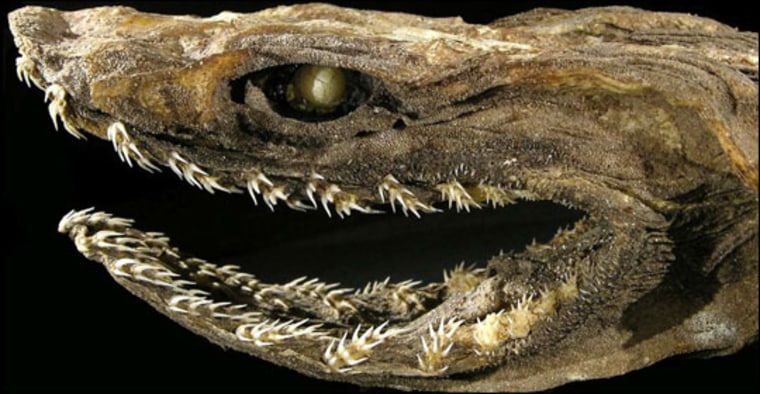Some three million years ago, eel-like sharks snaked through the region that now supports Tuscany's finest vineyards, suggest fossils recently found in the clay soil of the Chianti region.
Hundreds of fossilized teeth belonging to primitive shark-like creatures have been uncovered by amateur paleontologists near the village of Castelnuovo Berardenga, not far from Siena.
"It all started in 2001. We were poking around the Crete Senesi (in the Tuscany region), in a landscape made of green vine waves and ridges of clay, when we saw a tooth cropping out of the soil," Simone Casati, president of the Mineralogy and Paleontology Group of Scandicci, told Discovery News.
"Since then, we have found an exceptional number of fossilized fish teeth from the Pliocene epoch. Indeed, about three million years ago, before the sea started to retreat to its current location some 100 kilometers (62 miles) away, the site was a sort of underwater canyon populated by hundreds of deep-water creatures," Casati said.
Studied by Franco Cigala Fulgosi, from the Department of Earth Sciences of Parma University, the teeth turned out to belong to Chlamydoselachus lawleyi, a species which strongly resembles the living frilled shark Chlamydoselachus anguineus.
With a snake-like body, flat head and large toothy mouth, the shark has changed little since prehistoric times. Like primitive sharks, it has six gills, whereas most modern sharks have five.
Living at depths of about 2,000 feet, these five-foot sharks seem to prefer the cold waters of deep and upwelling regions. Making great vertical migrations at night, they have been often captured in Japan's Suruga Bay.
"The teeth unearthed in Tuscany belong to a species which differs from the living frilled shark only by its larger size," Cigala Fulgosi, an authority on fossil sharks, told Discovery News. "The teeth suggest an animal approximately 2.5 meters (8.2 feet) in length."
Reporting the finding in the latest issue of the journal Cainozoic Research, Cigala Fulgosi traced the discovery of identical fossilized shark teeth back to 1876.
At that time the naturalist Robert Lawley published the first pictures of a fossil teeth of Chlamydoselachus — nine of which he had collected in a village some 50 miles from Castelnuovo Berardenga.
Along with the Chlamydoselachus shark teeth, Casati and his team unearthed other fossils which included otoliths (ear stones which in fish play a role in hearing and balance) and teeth from other deep-water sharks.
According to Cigala Fulgosi, these fossil remains indicate that the site had a sufficiently deep connection with the Atlantic Ocean through the Gibaltrar Strait.
"What's really important in this discovery is the great abundance of Chlamydoselachus teeth, all concentrated in such a small area. We can't say why they all ended up there. We cannot exclude that they died because of currents, sea bottom depressions or traps. Everything can happen underwater," Cigala Fulgosi said.
The idea that, beneath the vines that today produce the renowned Chianti Classico red wine, there was once a world populated by sharks, delights winegrowers in the area.
According to Albiera Antinori, whose family has made wine for more than 600 years, the finding shows once again the special nature of the Chianti soil.
"We know that million-year-old minerals and deposits enrich this region. It's this special earth that makes our wines really unique," Antinori told Discovery News.
